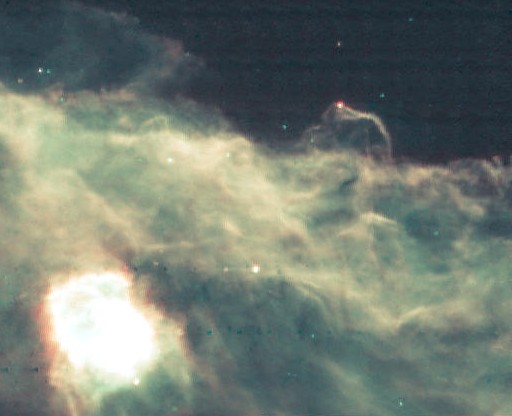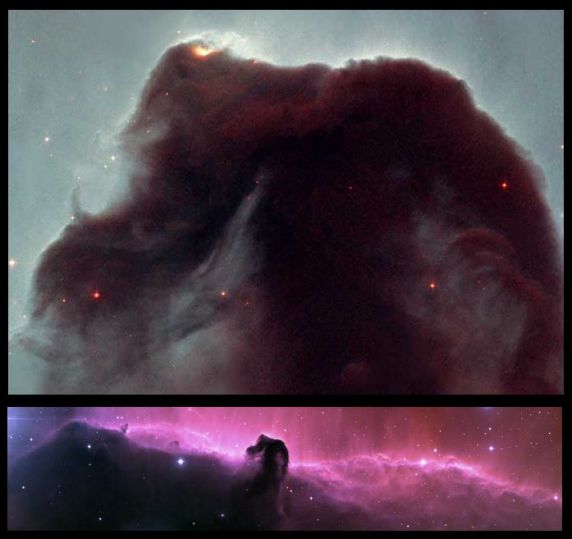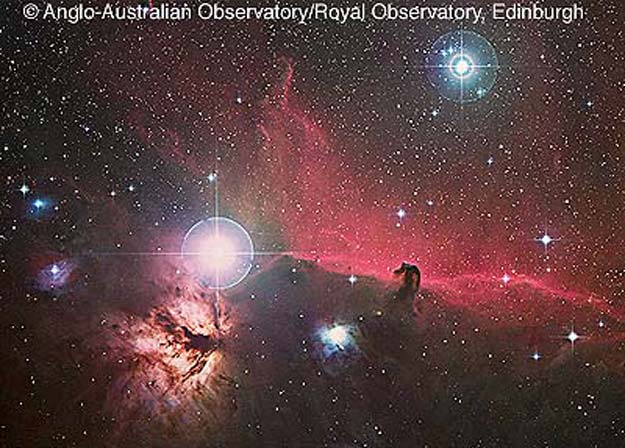About this image
This color picture was made by combining several exposures taken on the night of December 28th 1994 (UT of observation 29/12/94 around 04:00) with a 2048x2048 CCD detector at the 0.9m telescope of the Kitt Peak National Observatory. Observing conditions were not ideal throughout, and so only a select few of the original observations were used. The final tally used five frames in the B (blue) filter for a total of 22 minutes, three frames with the V (green) filter, 15 minutes, and two with the R (red), total 10 minutes. Each frame was carefully cleaned, a particularly difficult task for the blue filter due to internal reflection problems in the telescope, and then aligned and combined by computer to create this (approximately) true color picture. The pixel size on the sky is 0.68 arc seconds; after combination, the final size is 1480x1366, or about 17x15 arc minutes.
Orientation of image: north to the left, east down.
I've mentioned this before, but some of you may not know: the Horsehead Nebula is an EXTREMELY difficult object visually. I used to own a 10" equatorial reflector telescope. I had no luck sighting the Horsehead, even with dark, dry northern California skies. Now I live in Wisconsin and am surrounded by light pollution and either hazy humidity, clouds, or arctic temps. Oh well.
Horsehead and environs in infrared.

Compare that to the Hubble image of the top of the Horsehead, and the wider field version of today's APOD:

Here's a "long shot" view of the Horsehead Nebula and surrounding area. The overexposed stellar images are Zeta Orionis (Alnitak) at left and Sigma Orionis at upper right.


